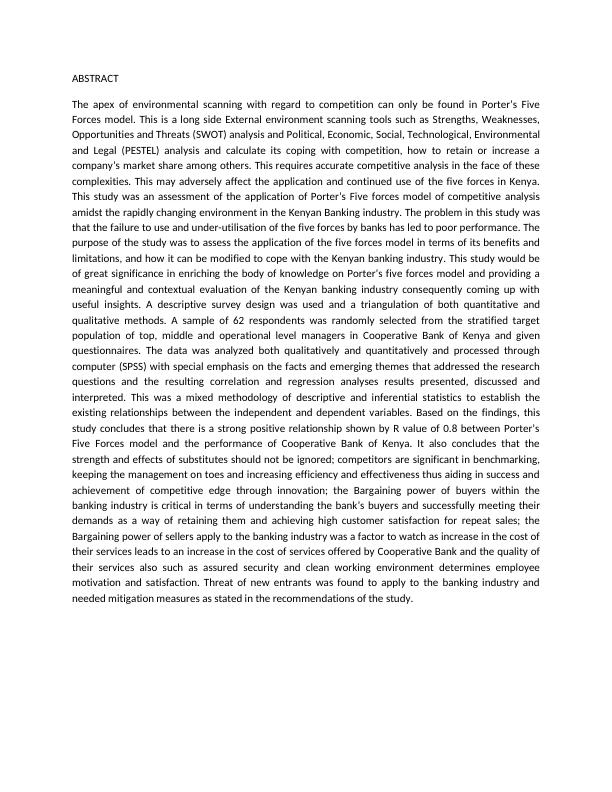Assessment of Porter’s Five Forces Model in the Kenyan Banking Industry
Write an essay explaining the main strategy development tools and how they are used in business. The essay should discuss at least 3 of the following tools: PESTEL, Five Forces, Resource-Based View, PROFIT, Input/Output, SWOT Analysis (including Cross Impact Analysis). The essay should include academic references and practical examples from industry.
Added on 2023-06-14
About This Document
Assessment of Porter’s Five Forces Model in the Kenyan Banking Industry
Write an essay explaining the main strategy development tools and how they are used in business. The essay should discuss at least 3 of the following tools: PESTEL, Five Forces, Resource-Based View, PROFIT, Input/Output, SWOT Analysis (including Cross Impact Analysis). The essay should include academic references and practical examples from industry.
Added on 2023-06-14
End of preview
Want to access all the pages? Upload your documents or become a member.

